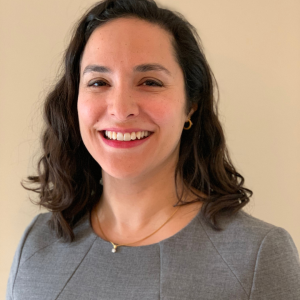By Pho Vu ’23 from The Amherst Student

On Tuesday, Sept. 20, Julie Babayan ’03 — the head of policy development for Adobe’s policy, government, and ethical innovation team in Washington, D.C. — shared her vision on worldwide technology policy. The event, which focused specifically on education, intellectual property, and artificial intelligence, was part of the Alumni-in-Residence series hosted by the Loeb Center.
Babayan began the event by highlighting important uses for AI. For instance, she described how the Adobe research team used AI to speed up the notoriously tedious and time-consuming process of colorizing black-and white-photos, allowing users to quickly and easily gain insight into historic photos.
Babayan then spoke about her career path and the growth of her keen interest in public policy. Babayan recalled how interning on Capitol Hill while going to Amherst helped her navigate her true calling. Yet, figuring out the path to her current career was not an easy one. Following graduation, Babayan decided to “take a breath” and get involved in John Kerry’s 2014 presidential campaign in Arizona for several months. The political climate in Arizona sharply contrasted with that of Massachusetts, allowing her to broaden her horizons in politics. After weighing the pros and cons, she headed to law school, thinking the program would afford her relevant opportunities down the line.
Having obtained her J.D. from Boston University, Babayan spent a few years working on the Hill for Senator Elizabeth Warren (MA-D) and in telecommunications law. However, as an attorney in partnership track, she quickly realized that “making partner” was not the route that she would want to pursue long-term. Through a referral on LinkedIn, Babayan would later make her way to Adobe.
Discussing her work at Adobe, Babayan described the difficulties of working on issues related to AI with policymakers who tend to favor heavier regulation of new technology. In order to tackle issues related to the use of AI, Babayan has gone on to make a number of policy recommendations about AI use.
For the first recommendation, Babayan emphasized the importance of human involvement in the process of AI development. She stressed the need to have at least some basic structures in place for collaborative work to happen, such as impact assessment and review boards.
The second recommendation that Babayan made was to pay attention to areas where laws already exist, especially in sensitive areas such as employment, credit, housing, and criminal justice. Interest exists in all of these areas to utilize AI to make decisions. “AI can be very useful in finding patterns and making inferences across a range of inputs,” Babayan said. “The decisions that could be assisted by AI systems could be fairly consequential to people who are applying for a loan or are seeking job opportunities or perhaps trying to get some other health care options that they need for their own wellbeing.”
Yet, for all its usefulness, policymakers in the U.S. and across the globe have also been worried for some time about whether AI systems may exacerbate social bias in the underlying decision-support system.
According to Babayan, there is currently no federal law in the U.S. that specifically governs AI bias issues, but courts and regulators regularly apply existing law and sector-specific anti-discrimination laws to cases involving AI. Many of these recognize claims under disparate treatment — where plaintiffs showed that the discrimination was intentional and the practice produced a differential impact over a protected group.
To demonstrate what she meant, Babayan gave an example of the decision to give loans to some in the context of housing, where loans are given to individuals solely based on their AI-generated profile indicating whether they had a good credit risk or not. Fortunately, laws such as the Fair Housing Act of 1968 — which was enacted as part of the Civil Rights Act — exist to prohibits discrimination in mortgage applications. Nevertheless, this sort of instance reflects an example of how the introduction of AI has the potential to heavily affect people’s lives.
To broaden the scope of the audience’s understanding of the matter, Babayan effectively drew examples from the human resource hiring process, where AI can be used to reduce hiring bias instead of increasing it. Nonetheless, Babayan pointed this out as another potential area of concern for automated decisions made without human oversight.
As the last of her public policy recommendations, Babayan suggested increasing investments in education, because creative problem solving, critical thinking skills, and collaboration skills will always be indispensable parts of getting a workforce that is well-equipped in our journey of keeping pace with technology.
Following Babayan’s discussion of these issues, the floor was opened up for students to ask questions. One student asked, “How can we use AI to better teach the skills that you’ve listed or to improve the pedagogy and teaching them?” In response, Babayan said that getting students to use cutting-edge tools had to be part of the answer. “I don’t even think that it’s just about CS classes,” she said. “I think [AI] could be [used] across disciplines and even [in] creative spaces.”
According to Babayan, another part of the answer is a diverse workforce. “Your AI ethics review board is only going to be as good as the lived experience [of the] people who were sitting at the table,” Babayan said. “If you have an AI ethics review board, or any kind of board of people who are making consequential decisions, that isn’t sufficiently diverse, you’re missing out on lots of creative solutions to problems, and we may not be seeing all the angles to a problem.”
Program Director of Amherst Career in Science & Technology Carolyn Margolin added to the session by asking Babayan what her advice for students would be as they begin thinking about their future careers.
“Think about what you want and not what you should do,” Babayan responded. She encouraged students to invest their time in obtaining “a very good understanding of yourself” to be able to make mature career decisions. “Take a look at what you actually want to do and craft a path around that,” she said.
Babayan also emphasized the importance of being open to new opportunities and career exploration. “I don’t think you have to necessarily do the same thing that you have been doing just because you have been doing it,” she said.
After the talk ended, several students reflected on why they attended the event, and what they will take away from it. Héloïse Schep ’24 shared that she was interested in the overlap between computer science and political science, specifically regarding tech policy issues. “I was really excited to see someone that worked in public policy in that field,” said Schep. “I especially love these kinds of events because you can see how a person [from your school] moves through their career.”
Conner Glynn ’24 emphasized how the event showed him that one’s life and career don’t always have to take a linear path. “I think I’m in the same position that she was [when she was my age]. I don’t know if I want to do a government career or a tech career or law school,” said Glynn. “It was helpful to see someone’s honest opinions about the difference between working with the House of Representatives in the Senate, and then moving between government jobs on Capitol Hill and then a private firm.”
After the presentation, Babayan stayed for a more in-depth and intimate exchange with a few students. A former member of Amherst College’s DQ a capella group, she enjoyed her experience at Amherst, and was “thrilled” to have the chance to come back. She returned to her earlier story about landing a job at Adobe via her LinkedIn connections. She said she had noticed that her friend’s circle had a connection who worked for the company, and asked him to introduce her to that employee. A casual conversation about corporate culture at Adobe later developed into that person saying she could recommend Babayan internally. A transition in Babayan’s career eventually grew out of that day.
“In a lot of these recruiting positions, the way that companies manage recruiting is that they do internal referrals. And so, if you have somebody within the company recommend you, then you stand a better chance of actually having an interaction with the recruiter,” Babayan shared.
